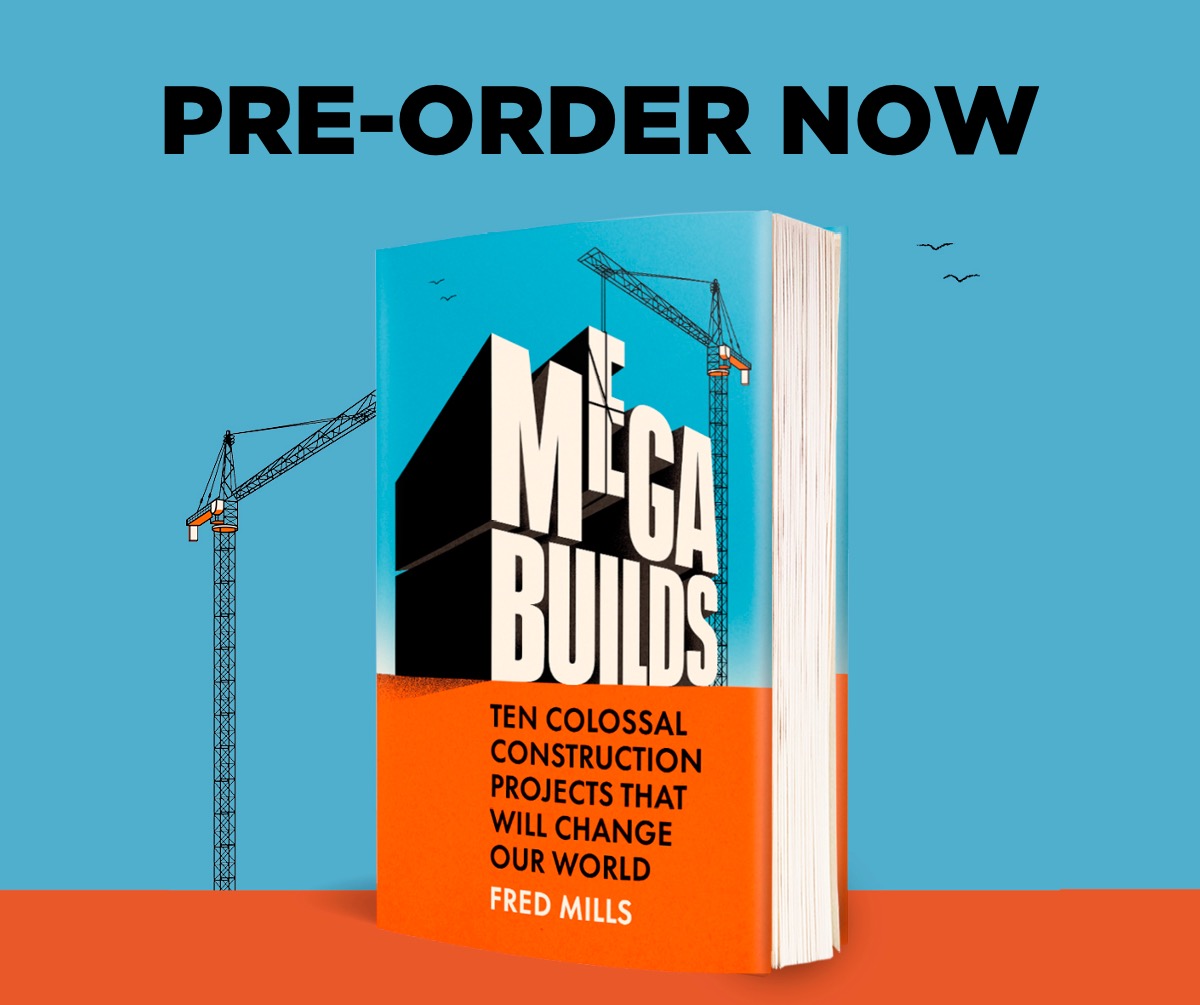Africa's $5BN Megadam Will Block the Nile
- Youtube Views 10,638,038 VIDEO VIEWS
Video hosted by Fred Mills. This video contains paid promotion for Brilliant.
THIS DAM is absolutely huge.
The reservoir behind it will be roughly the size of London while the dam itself will be twice as tall as the Golden Gate Bridge deck.
Welcome to the Grand Ethiopian Renaissance Dam – an epic name for an epic megaproject.
It’s decades in the making and forms part of the country’s so-called “economic miracle” largely because it has the potential to lift millions out of poverty.
But it could also be the dangerous spark that ignites a whole new conflict in the region: a fight for the Nile.
This is the largest dam in Africa. So large it has its own classification. It’s a mega-dam.
Once complete it will produce over 5,000 megawatts of electricity – more than double Ethiopia’s current output today – and its reservoir will hold 74BN cubic metres of water.
The numbers here don’t get any less overwhelming. The dam itself is made of 10M cubic metres of roller-compacted concrete and is set to include two power stations, three spillways and a saddle dam.
The main dam itself will be 145 metres deep by 1.7 kilometres long, while the saddle dam supporting the main structure will be an astonishing 4.8 kilometres long by 45 metres high.
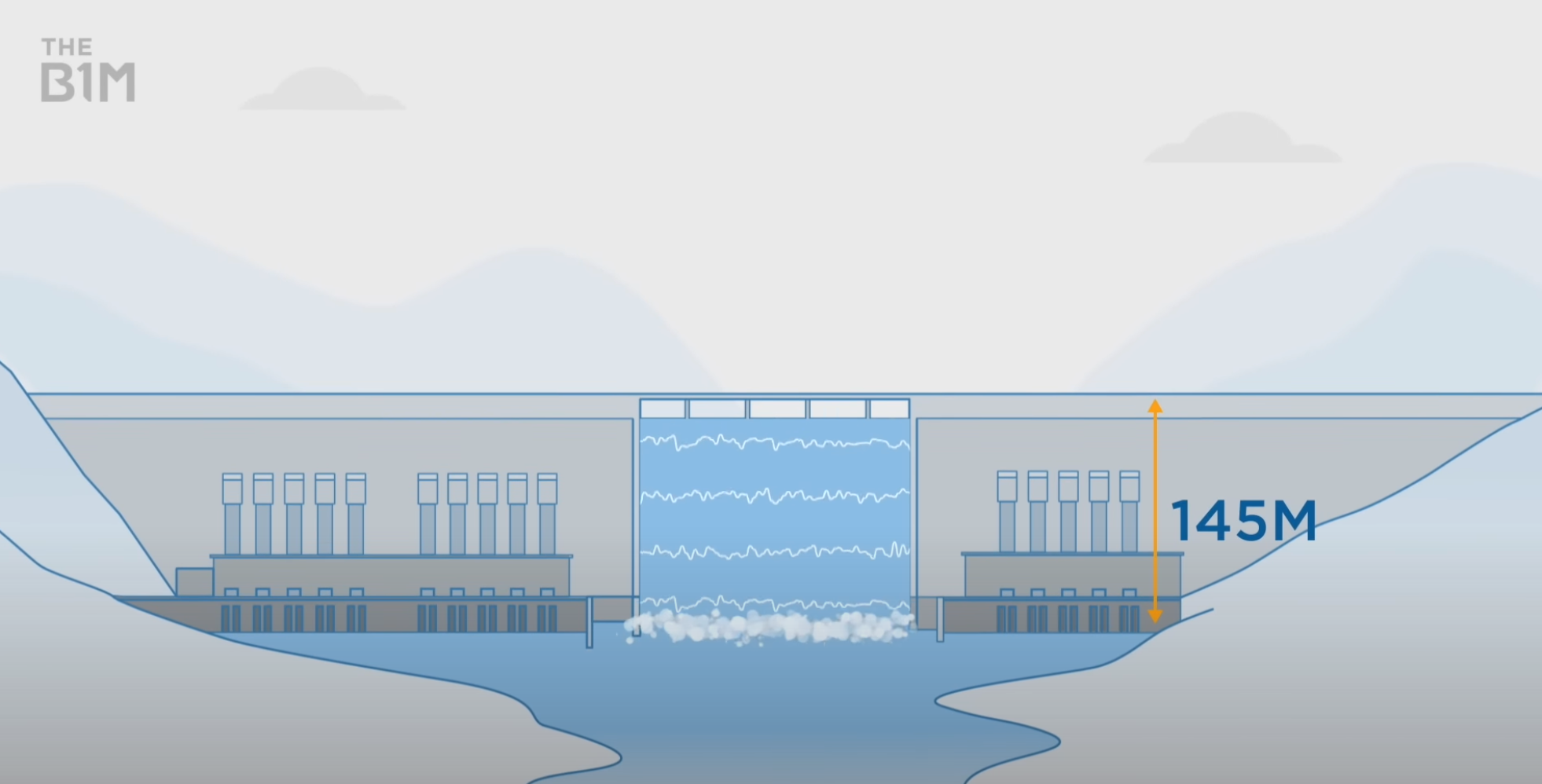
Above: The dam will be 145 metres high.
There will be two outdoor power stations on either banks of the river, with the capacity to generate roughly 2,000 to 3,700 megawatts of power.
The first step on the journey to build something as enormous as this kind of set the tone for the rest of the project – the casual diversion of the Blue Nile river in 2013.
Now, as dramatic as that sounds, it’s actually pretty common when building dams. Here’s how it works.
Most dams are built over rivers, but to pour concrete you need a dry working area.
So diversion channels or tunnels are formed around the side of a dam’s location for the period of its construction.
If you’re going through hard rock, explosives are typically used to clear a path, while soft soils and rocks are excavated.
Once there is a dry space for workers, foundations are laid. They have to be strong enough to withstand the weight of the dam and the enormous water pressures acting on them.
The Renaissance Dam will be 145-metres deep – almost the height of a skyscraper – and that 74BN cubic kilometres of water behind it will create a lot of pressure.
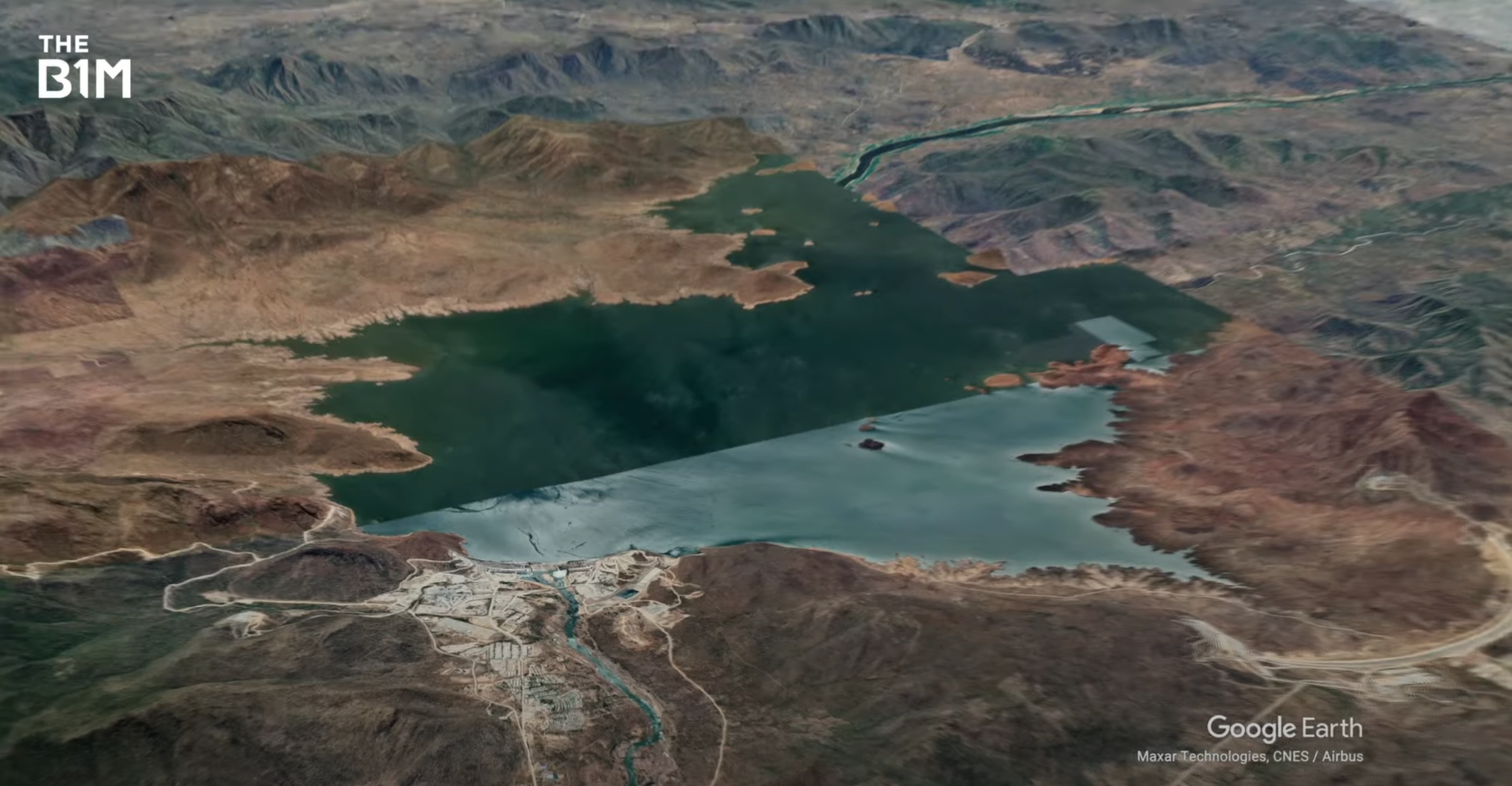
Above: The reservoir behind the dam is roughly the size of London.
Those foundations absolutely cannot leak so the soil and rocks in the ground below the dam have to be strength tested and are sometimes removed and replaced with stronger materials.
Once a dam is complete and in place, the diversion channels around it are blocked and water typically builds into a reservoir behind the dam structure – that’s exactly what happened at the Hoover Dam on the Arizona-Nevada border.
Water is let through openings in the dam as necessary and often harnessed for hydroelectric power.
The immense size of the Renaissance Dam has likely required special on-site concrete batching plants to be set up close to the work site, increasing efficiency and helping ensure more control over the delivery of materials, something that’s essential once you’ve started a big concrete pour.
But a lot of the construction details for the Renaissance Dam have been kept under wraps and that’s all due to the somewhat fragile political nature of this project.
You see, the dam is being built here, on the Blue Nile, just 30 kilometres upstream from the Sudan border – and it's caused fierce debate over who exactly owns the Nile and the water flowing in it.
Further downriver is Egypt and Egypt is… well, Egypt is pretty much entirely built around the Nile.
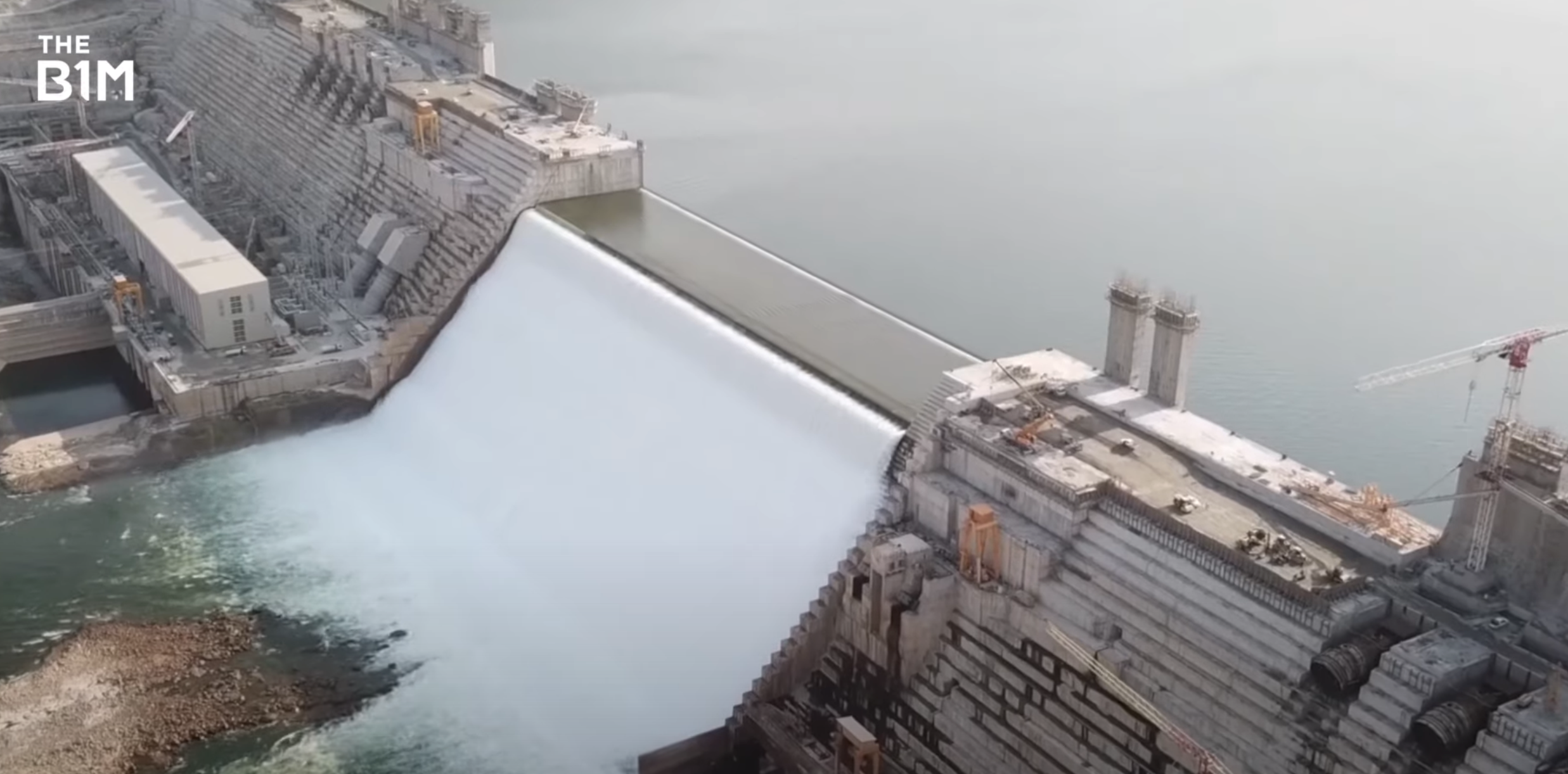
Above: The dam is the largest in Africa.
An astounding 85% of the country’s water comes from just this one source and some 95% of the country’s population live within a few kilometres of the famous river.
Canals from the Nile irrigate farms and support cities, agriculture and fishing. The Nile has breathed life into this desert region for thousands of years.
And if something were to happen to jeopardise that water source, well, the consequences could be disastrous – and Egypt knows this.
Tensions in the region are high, and this dam seems to be at the centre of it. Egypt was even reportedly prepared to bomb it to protect their stake in the Nile.
So why would Ethiopia risk a potential war, all for a shiny new dam?
Well, its government is hoping that this megaproject will help lift the country out of poverty. Half of all Ethiopians today do not have access to electricity, the dam will change that.
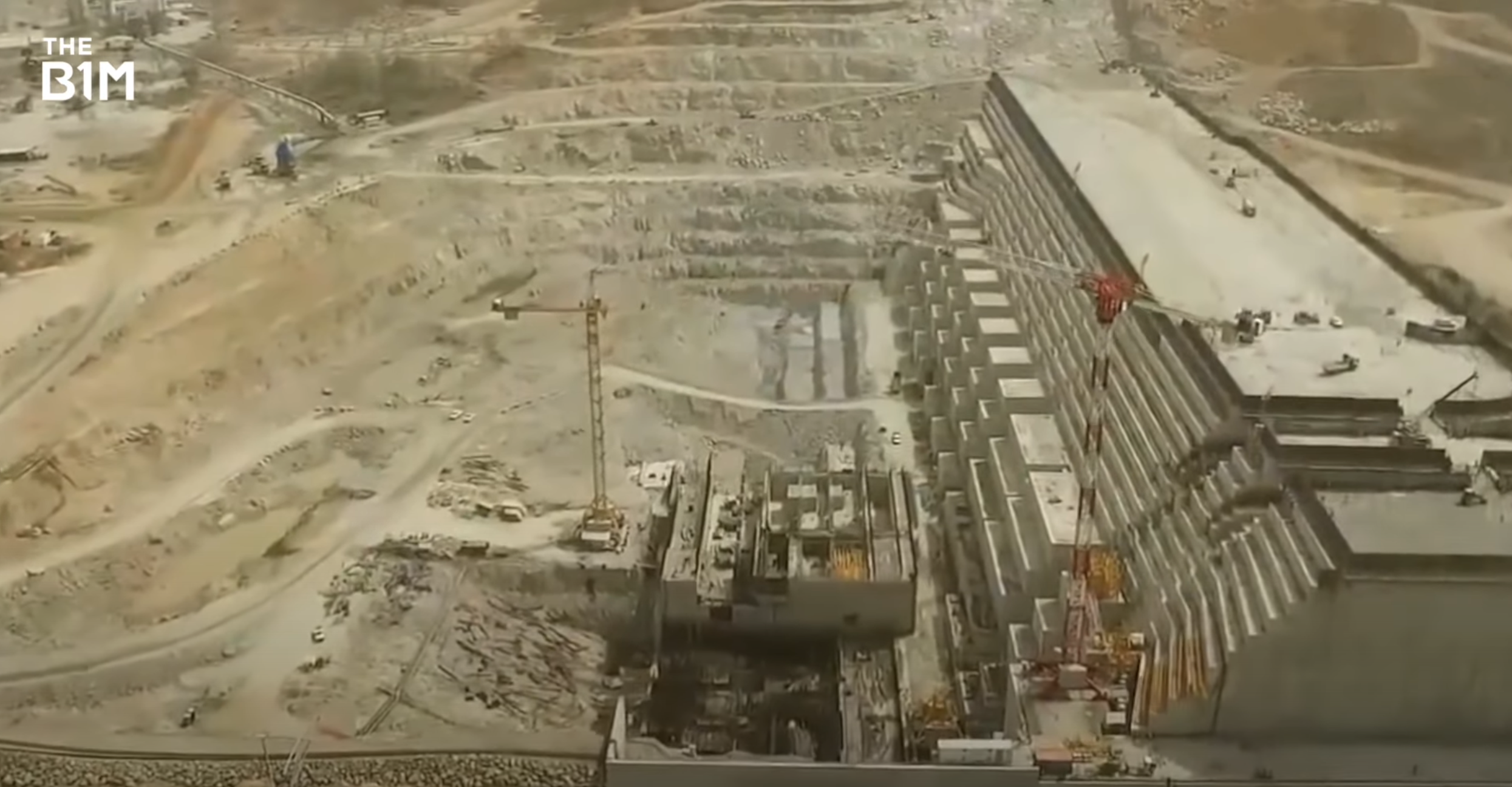
Above: Much of the dam has been constructed in secrecy.
The country is already on the fast track to achieving its economic goals. Ethiopia has become Africa’s fastest growing economy, this is in part boosted by massive investment in infrastructure.
During this period of transformational growth, Ethiopia managed to reduce the number of people living in extreme poverty dramatically – from over 50 percent of its population to 31 percent.
It’s been called the Ethiopian “economic miracle”, and it's becoming a model for other African countries.
Major infrastructure projects play such an important role in this process.
For its part, Ethiopia has argued that effects of the dam will be minimal on the countries that are downstream, while benefits will be plentiful and can be shared. But the debate over who can lay claim to the waters continues.
Today, talks between the countries have almost completely broken down with no agreement met, despite the dam now being 90% complete and scheduled to be filled within three years.
Whatever the outcome, this is a piece of infrastructure that’s likely to reshape more than just rivers in the region.
Head to brilliant.org/theb1m for a 30-day free trial + the first 200 people will receive 20% off their annual subscription.
Narrated by Fred Mills. Additional footage courtesy of Google Earth, TRT World, Paramount Pictures, Open Street Map, DW News and BBC.
We welcome you sharing our content to inspire others, but please be nice and play by our rules.






